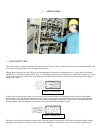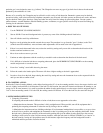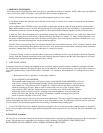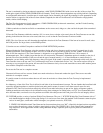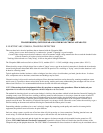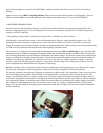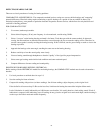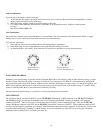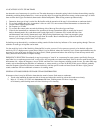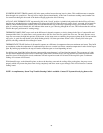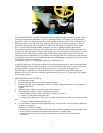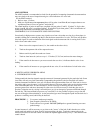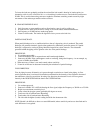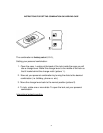24
3. GENERAL MECHANICAL TROUBLE SHOOTING
As operating equipment begins to fail due to component wear, breakage or misalignment, ultrasonic shifts occur. The accompanying
sound pattern changes can save time and guesswork in diagnosing problems if they are adequately monitored. Therefore, an ultrasonic
history of key components can prevent unplanned downtime. And just as important, if equipment should begin to fail in the field, the
ULTRAPROBE can be extremely useful in trouble shooting problems.
TROUBLE SHOOTING: 1. Use the contact (stethoscope) module. 2. Touch test area(s): listen through headphones and observe the
display. 3. Adjust sensitivity until mechanical operation of the equipment is heard clearly and the bar graph can fluctuate. 4. Probe
equipment by touching various suspect areas. 5. If competing sounds in equipment being tested present a problem, try to "tune in" to
the problem sound by: a. Probing equipment until the potential problem sound is heard. b. Adjust Frequency slowly until the problem
sound is heard more clearly. 6. To focus in on problem sounds, while probing, reduce sensitivity gradually to assist in locating the
problem sound at its' loudest point. (This procedure is similar to the method outlined in LEAK LOCATION, i.e., follow the sound to
its loudest point.)
MONITORING OPERATING EQUIPMENT In order to understand and keep ahead of potential problems in operating equipment, it
is necessary to establish base data and observe shifts in that data. This can be accomplished by data logging readings directly into the
Ultraprobe or by recording sounds to a tape recorder (by connecting to the Headphone output, or to the I/O port using the proper cable.
The heterodyned output can be downloaded to a spectral analysis program in a computer.
PROCEDURE:
1. Select key locations to be monitored and make permanent reference marks for future testing
2. Follow steps 1-2 as outlined above in the Trouble Shooting section.
3. Select a frequency for each test spot.
4. Save by hitting yellow store button (refer to Operation Mode: Yellow Store Button for description).
NOTE: In diagnosing any type of mechanical equipment, it is important to understand how that equipment operates. Being able to
interpret sonic changes is dependent on a basic understanding of the operations of the particular equipment being tested. As an
example, in some reciprocal compressors, the diagnosis of a valve problem in the inlet manifold is dependent on recognizing the
distinctive clicking sound of a good valve vs. the muffled click of a valve in a "blow-by" mode.
In gearboxes, before missing gear teeth may be detected as an abnormal click, the normal sounds of gears must be understood. In
pumps, certain pumps will have surges, which may confuse inexperienced operators by the constant shifting of the intensity levels.
The surge pattern must be observed before a lower, consistent bar graph reading can be recognized as the true reading.



